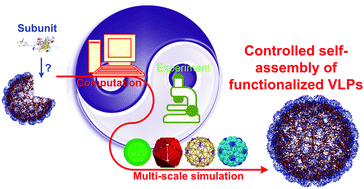Biomolecular engineering of virus-like particles aided by computational chemistry methods
Abstract
Virus-like particles (VLPs) are repetitive organizations of viral proteins assembled in an appropriate physicochemical environment. VLPs can stimulate both innate and adaptive immune responses, due to their particulate structure enabling uptake by antigen presenting cells. These characteristics have led to successful development of VLP-vaccine products, and will ensure their vast potential in years to come. Future success of VLP therapeutic products will be determined by advances in their bioengineering, and also by the development of tools to design for their stability, function and application. This review focuses on approaches for VLP assembly in controlled chemical environments in vivo and in vitro, and the application of computational tools for improved chemical sequence design, and fundamental understanding of assembly.


 Please wait while we load your content...
Please wait while we load your content...